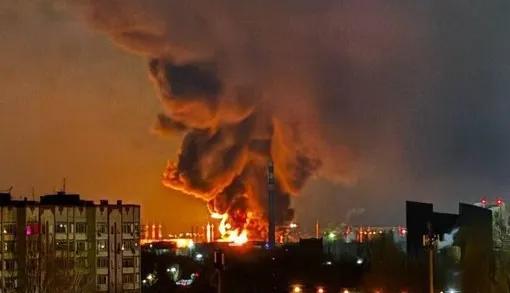
The night of March 20, the Russian city of Engels faced its most intense drone attack since the war began. Saratov region governor Roman Busargin confirmed that Ukrainian drones targeted Engels-2, a key military airbase.
This base houses strategic bombers like the Tu-95MS and Tu-160, both capable of carrying nuclear weapons. The attack sparked a fire, forcing emergency crews to evacuate residents near the site.

Fires and Destruction Across Engels
Thick smoke rose from the airfield, visible from miles away. Reports indicate that drones also struck an oil storage facility, triggering another fire after debris fell onto the depot. The oil site, possibly linked to the Crystal factory, stores fuel for Russia’s strategic bombers.
The attack caused widespread damage in Engels. Around 30 homes suffered destruction, along with public infrastructure. A hospital, two kindergartens, and a school sustained damage. Authorities shifted all school classes to remote learning to ensure student safety. Two civilians suffered injuries and received medical treatment.
Russian Air Defense Response
The Russian Defense Ministry reported that air defense forces shot down 132 Ukrainian drones overnight. In the Saratov region alone, 54 drones were intercepted. Other affected regions included Voronezh (40 drones), Belgorod (22), Rostov (nine), Kursk (three), and Lipetsk (one). Three drones were also shot down over Crimea, which Russia annexed in 2014.
Strategic Implications
Engels sits about 700 kilometers from Ukraine’s front lines, making this attack a significant escalation. The scale of the strike suggests a shift in Ukraine’s military strategy, targeting deep inside Russian territory. As both sides adapt their tactics, the conflict’s trajectory remains unpredictable.



